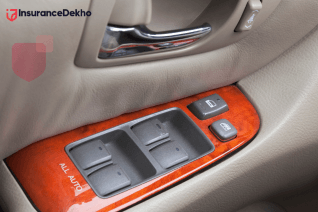5 Things To Know About Car Insurance Policy For Beginners
Here is a complete car insurance guide for beginners!
A car insurance policy protects the owner of the vehicle from financial losses which may arise if his/her car meets an accident or gets stolen or becomes a victim of any other unfortunate event. Therefore, as a learner, it is required that you purchase a proper insurance policy for the much-loved car.
Things You Need To Know About Car Insurance Policy As A Beginner
Beginners are often advised to buy a car insurance policy with the help of experts. But with this article we aim to make you make the beginners well versed with the basics of car insurance. In order to help you out, we list five important things which you must know before buying a car insurance policy.
Car Insurance Comes in 3 Plans
There are three types of car insurance policy in India. They are:
- Third Party Policy: According to the Indian Motor Tariff 2002, it is compulsory that every car owner has third party insurance policy. It is a basic insurance policy that provides insurance against third party liabilities when the insured’s vehicle causes an accident. The coverages are provided against bodily injury, property damage and death of the third party.
- Comprehensive Policy: In this insurance policy, the car owner is insured against a wide range of third party liabilities and against own damages. It also covers the damages suffered by the insured’s car in natural or man-made calamities, fire and theft. Among all other insurance plans, the comprehensive policy offers maximum coverage. You can also extend the coverage of a standard comprehensive policy by choosing several add-ons.
- Standalone OD Policy: A standalone own-damage car insurance policy offers coverage only for own damages suffered by the insured’s car. Coverage for third party liabilities is not included in this policy. Therefore, to meet various legal liabilities, the car owners need to choose a third party policy, in addition to the standalone own-damage car insurance policy. Under this policy, the insurance company compensates for the loss or damage caused by accident, theft, fire, any natural or man-made calamity, etc.
The Cost of Car Insurance Is Called Premium
Premium is the amount you pay to the insurance company in exchange for the insurance coverage it offers for his/her car. The amount of the premium varies from one company to another and depends on the claims made against the policy. Various factors, such as the age of the insured, the type of the engine, customization and the geographical location of the insured determine the premium amount of the car insurance policy.
The Plan’s Sum Insured is Car’s Insured Declared Value
IDV is the current market value of the insured’s vehicle. In other words, it is the maximum amount that the insurance company agrees to reimburse when the insured’s car is totally lost due to the damages caused by an accident or calamity.
In case your vehicle gets stolen or is damaged beyond repair or in case of a total loss of your vehicle, IDV is the maximum amount that you can claim within the policy period. The brand’s current listed selling price of that model and the depreciation percentage are taken into consideration while calculating the claim amount. IDV of a car decreases with age due to depreciation and other factors.
Car Insurance Coverage Can Be Enhanced With Add-ons
Car insurance add-ons are the optional covers that can be purchased by the car owners along with a car insurance policy in order to increase its efficiency. A number of add-ons are provided by insurance companies and they are varied with respect to the different companies. The policyholder has to pay extra charges to avail them. The provision of add-ons is only available with comprehensive car insurance and standalone own damage policies.
No Claim Bonus (NCB)
NCB is a reward given to the policyholder by the car insurance company for making no claims during the policy term. It can be added to discount your annual car insurance premiums. On own damage premiums, the NCB discounts range from 20% to 50%. The NCB can be claimed even when it is transferred from one vehicle to another, provided the policyholder remains the same.
Below is a table which explains how much NCB a policyholder can get (As per IRDAI):
|
Claim Free Years |
NCB Percentage |
|
1 Year |
20% |
|
2 Years |
25% |
|
3 Years |
35% |
|
4 Years |
45% |
|
5 Years |
50% |
Purchasing a suitable car insurance policy is comparatively a difficult task than buying a car. It should be bought after doing proper research, especially if the car owner is completely new and possesses limited knowledge in this sphere. Considering the points listed above will help you to make a well-formed decision regarding your car insurance policy.
For further reading:
Best Car Insurance Policy for People in Their 30s
Disclaimer: This article is issued in general public interest and meant for general information purposes only. Readers are advised not to rely on the contents of the article as conclusive in nature and should research further or consult an expert in this regard.














































